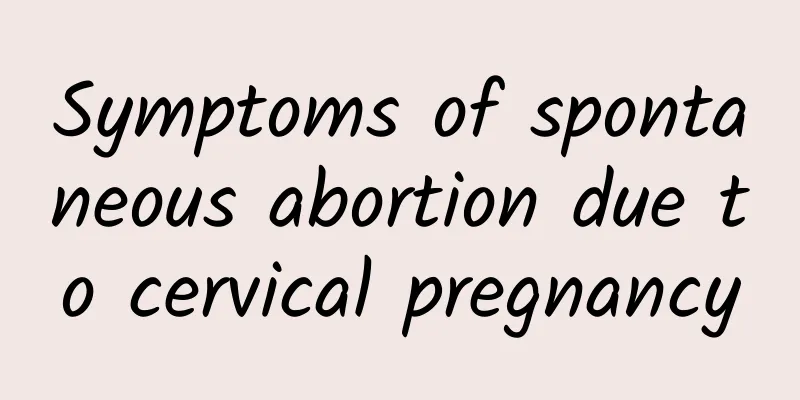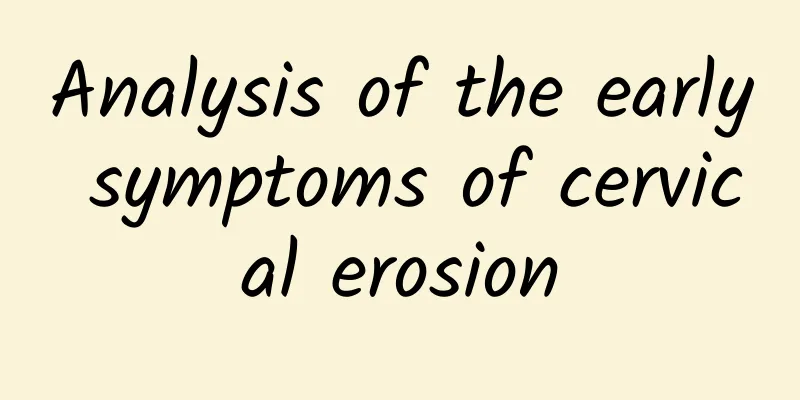Symptoms of spontaneous abortion due to cervical pregnancy

|
If a spontaneous abortion occurs due to cervical pregnancy, common symptoms are irregular vaginal bleeding, usually bright red, with small amounts of blood clots discharged, and dull pain or a feeling of heaviness in the lower abdomen. In this case, you should seek medical attention as soon as possible, because cervical pregnancy is a type of ectopic pregnancy, which can easily cause heavy bleeding during abortion and may be life-threatening. Cervical pregnancy is an ectopic pregnancy in which the embryo implants in the cervical canal. Most spontaneous abortions are characterized by persistent or intermittent vaginal bleeding, usually with more bleeding than normal menstruation, but a small number of patients do not have obvious symptoms in the early stages. Severe pain may occur when the gestational sac falls off or is squeezed by the cervix. At the same time, some patients may have complications such as anemia and hypotension, especially when heavy bleeding is not controlled in time. If the pregnancy tissue has not been completely discharged, abnormal echoes in the cervix can generally be observed under ultrasound images, with unclear boundaries from surrounding tissues. Undiagnosed or improperly handled may cause infection and even blockage of the fallopian tubes, affecting future fertility, so it must be taken seriously. Cervical pregnancy is an ectopic pregnancy in which the embryo implants in the cervical canal. Most spontaneous abortions are characterized by persistent or intermittent vaginal bleeding, usually with more bleeding than normal menstruation, but a small number of patients do not have obvious symptoms in the early stages. Severe pain may occur when the gestational sac falls off or is squeezed by the cervix. At the same time, some patients may have complications such as anemia and hypotension, especially when heavy bleeding is not controlled in time. If the pregnancy tissue has not been completely discharged, abnormal echoes in the cervix can generally be observed under ultrasound images, with unclear boundaries from surrounding tissues. Undiagnosed or improperly handled may cause infection and even blockage of the fallopian tubes, affecting future fertility, so it must be taken seriously. Once suspected symptoms are found, you should go to the hospital immediately for diagnosis and treatment. Treatment usually includes drug hemostasis, curettage or interventional embolization hemostasis. If the amount of bleeding is large and the patient has symptoms of anemia, drugs such as misoprostol can be used to promote uterine contraction and stop bleeding quickly. For pregnancy tissue that has not yet been discharged, it can be completely removed by negative pressure suction curettage. In the case of heavy bleeding, vascular embolization may be required to control bleeding. After discharge, you need to follow the doctor's advice, use contraception for 3 to 6 months, and closely monitor your recovery. The key to preventing cervical pregnancy is a comprehensive examination before pregnancy, timely treatment of reproductive tract infections, and maintaining a healthy lifestyle. |
<<: Can I still get pregnant with a uterine cyst?
>>: Can chocolate cysts be treated with strenuous exercise?
Recommend
Can pelvic peritonitis heal on its own?
With the development of society, the pace of life...
Symptoms of acute pelvic inflammatory disease
Pelvic inflammatory disease is a type of gynecolo...
Can adnexitis be transmitted to other people?
Now more and more people are suffering from adnex...
How Bacterial Vaginosis is Spread
Fungal vaginitis is caused by fungal infection. Y...
The cause of ectopic pregnancy caused by fertilized egg migration
Before treating any disease, you must first under...
Serious consequences of improper post-abortion treatment
The frequent occurrence of unwanted pregnancies i...
What are the diagnostic indicators for cervical precancerous lesions?
For diseases like cervical precancerous lesions, ...
What is the cause of second-degree cervical erosion in women? Second-degree cervical erosion is caused by 5 reasons
The cervix is a unique part of a woman's bo...
What should I pay attention to after surgery for extrauterine fibroids? Do extrauterine fibroids require surgery?
Extrauterine fibroids are a common gynecological ...
Knowledge on the treatment of uterine fibroids
Among patients with uterine fibroids, there are m...
Mushrooms are low in calories, help metabolism and enhance immunity! Nutritionist Wang Zinan: Mushrooms have three powerful ingredients
Mushrooms are high in protein and are known as &q...
Why do uterine fibroids sometimes disappear suddenly?
Why do uterine fibroids sometimes not appear? Ute...
Should you worry about cervical erosion becoming cancerous? Teach you how to prevent cervical cancer
Cancer is scary! Cervical cancer has killed count...
How to choose a gynecological hospital for the treatment of cervical erosion
How to choose a gynecological hospital to treat c...
Who are the most susceptible to vulvar leukoplakia?
Vulvar leukoplakia causes serious physical and me...









